Classical Conversations Tutor Resources (FREE PDF Download!)
This post contains resources to help you as a Classical Conversations foundations tutor. I’ll share some of my favorite props to use, as well as some free PDF downloads to help you out!
This is our fourth year being a part of CC, and I am beginning my third year tutoring a Foundations class. Where has the time gone? Although we are not truly and completely Classical homeschoolers, our local CC community has been such a gift to us and I thank God that he led us to this wonderful group of families. Besides the friendship and community, it has been such fun being a Classical Conversations Foundations tutor. I love teaching of any sort, and being in front of the class makes me smile, every single week.
If you are a Classical Conversations foundations tutor also, you might be looking for a simple, easy-to-use download to help you with your tutor prep each week – or perhaps you just need a few more ideas to use as you tutor each week! Everyone has their own style, and their own way of doing things, but I’d like to share the pretty little prep sheet that I’ve created and am using each week. You can grab it with the form down below if it looks like it might be useful. I’ll also explain how I use it, and share some other resources that help me – read on!
The first page is what I use weekly to plan out our class time. I write down ideas of songs, hand motions, or other activities that we’ll use to practice the new grammar for the week, as well as notes to help me remember how I want to present the science experiment and fine arts activity. Finally, I make notes on which review game we will play and any supplies I need to remember to bring along for it.
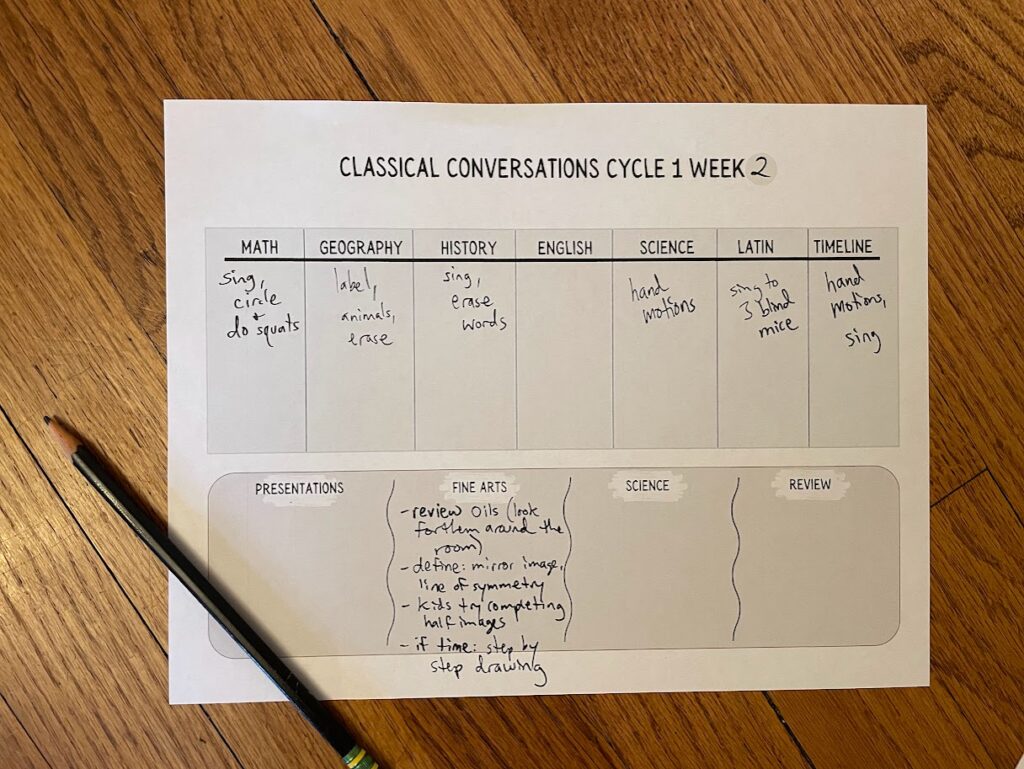
The second page is one that I printed in color, laminated, and then cut out to use in our classroom. I use a bit of putty to stick each of these labels to the whiteboard, and it’s a simple way for the kids to see exactly what is happening and in what order. I have a few neuro-divergent kids in my class this year, and for those children especially it is helpful to have a visual representation of our day so that they know exactly what to expect at each time. However, whether or not you have any children on the spectrum in your class, I do think that all children appreciate knowing what the plan for the day is!
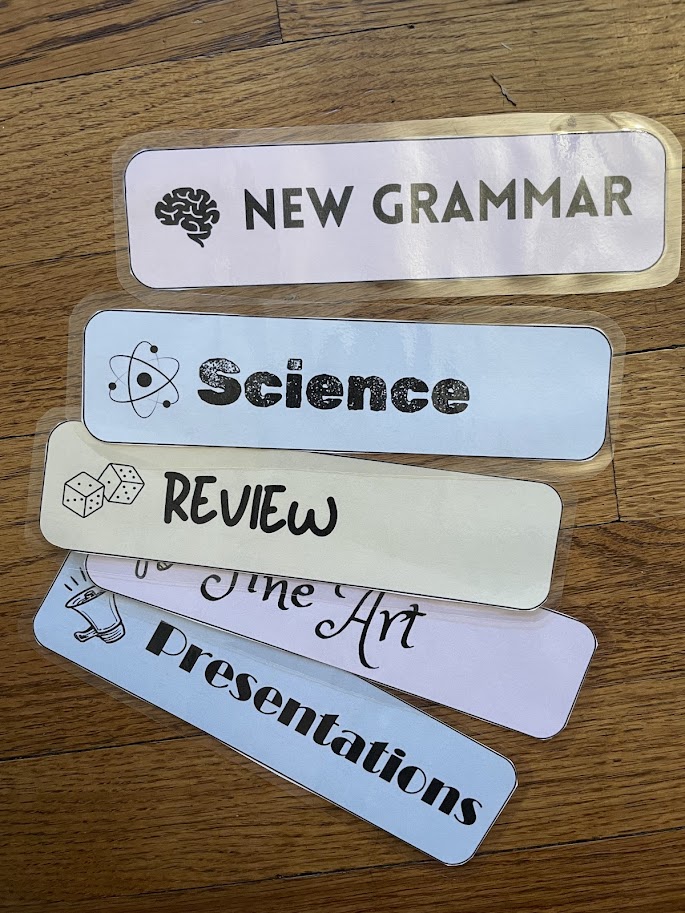
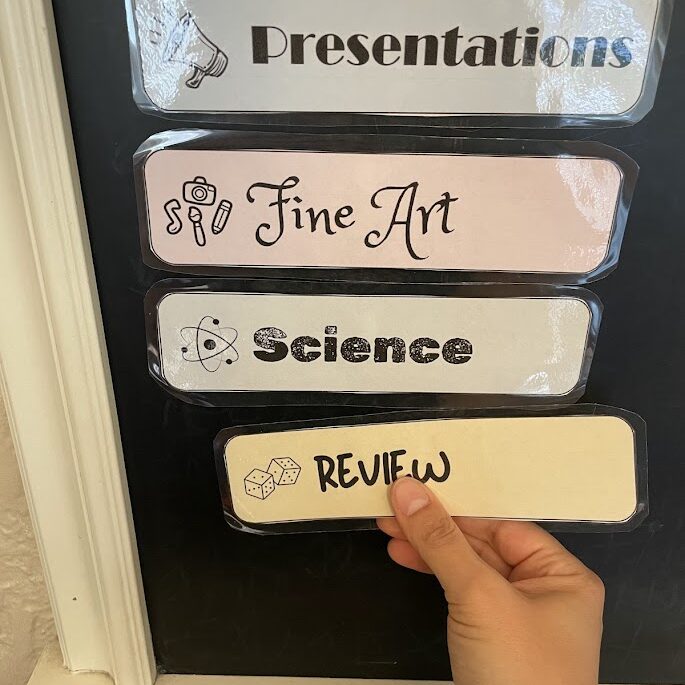
If either of these downloads would help you out, you can grab them for FREE by putting your email in the form below. I hope they will make your busy day just a teensy bit easier!
Finally, I wanted to share a few of my favorite resources that have helped me out in my role of bring a Classical Conversations foundations tutor. These are items I’ve used over and over again, that have been tested and kid-approved by several different classes with a wide range of ages! Take a peek and see if there’s something here that could be fun for your class, too.
Tutor Resources for Classical Conversations
On Amazon
- Miniature animals: I use these with our geography time. We’ll label the geography memory work for the day, then pass out an animal to each kid and have them hop/jump/swim/crawl their animal from place to place as they say the names. The kids love it and these animals are just the right size to fit on the countries (though still a bit big for some of the cities and rivers)!
- Scrunch map: I just love how anti-fragile this map is. We can use it for geography review, or even when we are learning about composers and artists. Simply read a bit about the composer, find out where they were from, and then ask a kid if they can find that country on the map!
- Shaker eggs: there are quite a few history songs that work really well with these shakers. The kids love shaking them along with the beat! Just make sure you remind them to try to sing too, otherwise they get so focused on shaking that no one will sing. If you happen to have any other kids’ percussion instruments around the house – jingle bells or sticks or maracas or anything like that – you can use those too!
- Plastic orange cones: here in Wisconsin there are a LOT of days throughout the school year when it is not easy or pleasant to get outside, so if we have a CC day when the weather is decent I always try to get the kids out and make the most of it! I use these cones often for outdoor relays during review time, or marking bases in a game of kickball, or just for putting boundaries on the field for a game.
- Mini guitars: I bought this set a few years back and I’ll pull them out whenever we have a history song that features guitar. The kids take turns strumming them, and they make just enough noise to be fun but not too much to overwhelm the singing!
- A good puppet: I don’t use these every week, but every once in a while they make an appearance and they are so fun! We might teach our puppet Latin, and have them repeat it after us, or perhaps the puppet will “teach” the class one subject from our new grammar – or we can ask our puppet review questions and see how they do! There are so many ways to get creative with these, and kids just love it.
Other Helpful Resources
- Mrs. C on Youtube: she has videos for every single week of every cycle, giving ideas for how to present the new grammar memory work. I like her down-to-earth and simple approach! Of course, you can just search for whatever week you’re on and find many other ideas too. Look around until you find one that fits well with your teaching style!
- Timeline hand motion videos on CC Connected: login to CC Connected, click on “learning center” and then “foundations” and then search for “timeline.” You’ll find helpful videos detailing all the hand motions there, which – as a non-sign-language-person – I appreciate! There are also weekly worksheets that you can find if you search for “sandbox ezine” though I rarely use those as we are not really worksheet sort of people in our homeschool.
- Memoria Press art prints: I have several sets of the 11×17 posters and they have come in handy so many times for the great artists section of CC! Not every artist studied in CC is represented here, but many of them are, and these posters are much easier to haul around than a ginormous art book from the library. Plus, when we get home we can stick them up on the wall and enjoy them all week! You can even have your class do a bit of Charlotte Mason-style narration after studying the prints for a few minutes – I’ve tried this and it has worked quite well.
- A sense of humor and a love for the children: honestly, this should come first. As much as you might feel some pressure to fit all the material in or to make sure the kids have memorized everything, please remember that they are, first and foremost, persons created in the image of God. And as such, they deserve your respect and consideration!
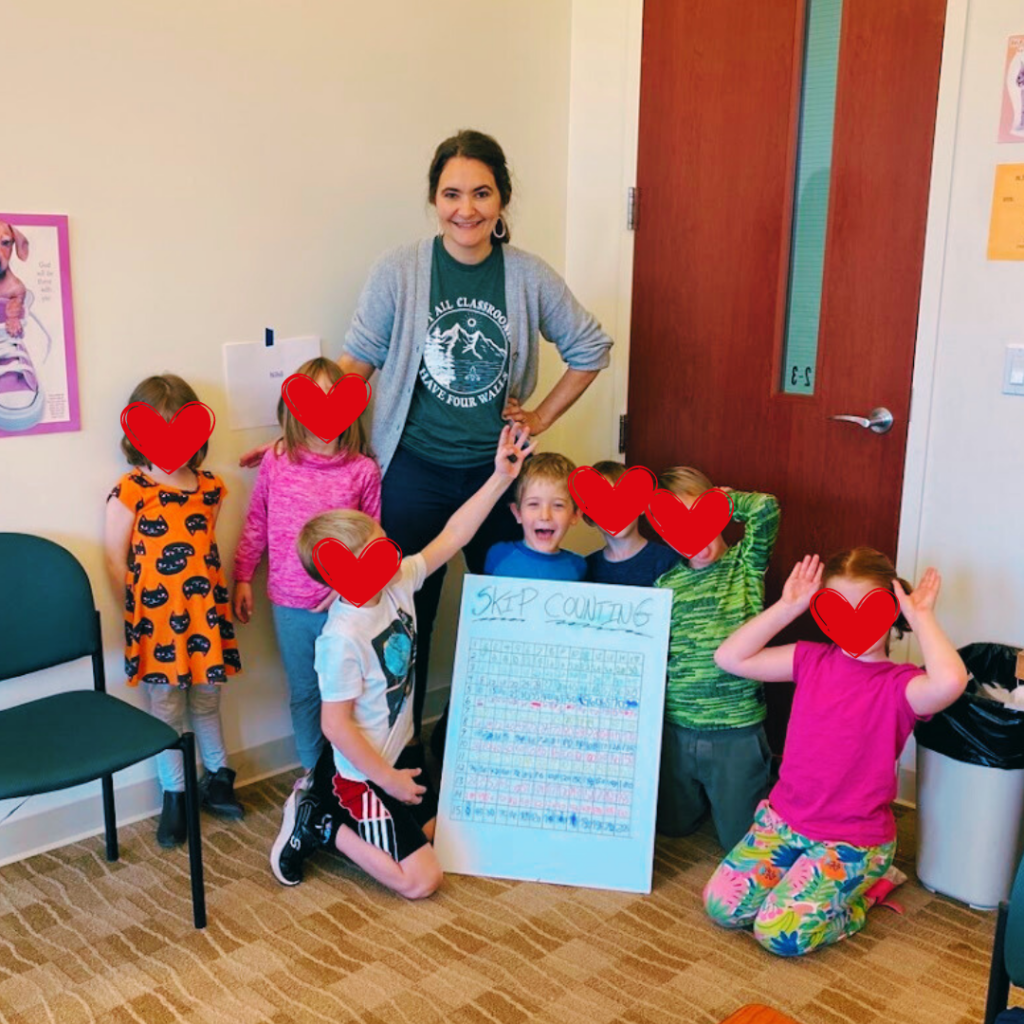
Finally, let me remind you – as our wise director always tells us – that you don’t need to buy special props for every single week or design elaborate visuals or use fancy equipment. Very often, the simplest tools are the best! You just want to give the other moms in the room a couple ideas that they can easily use at home for review, if they want to.
Maybe they will and maybe they won’t! It’s totally up to them. These are a few simple ideas that have worked for me during the past few years, but you will likely come up with your own that make sense to you. Adapt and adjust them to your own unique personality and your own unique kiddos.
I wish you all the best for your year of tutoring, and don’t forget to grab those free downloads at the top of the post!

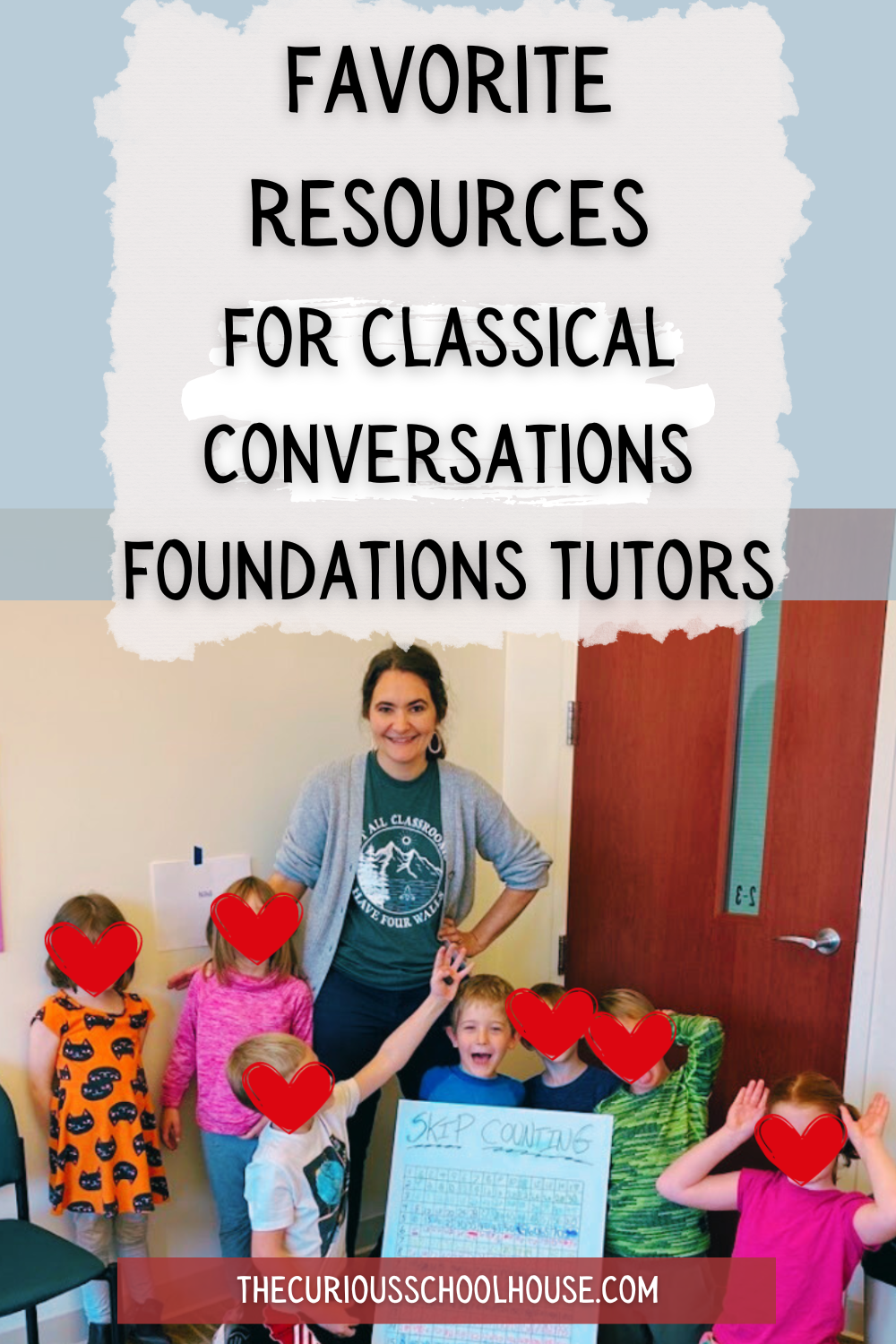
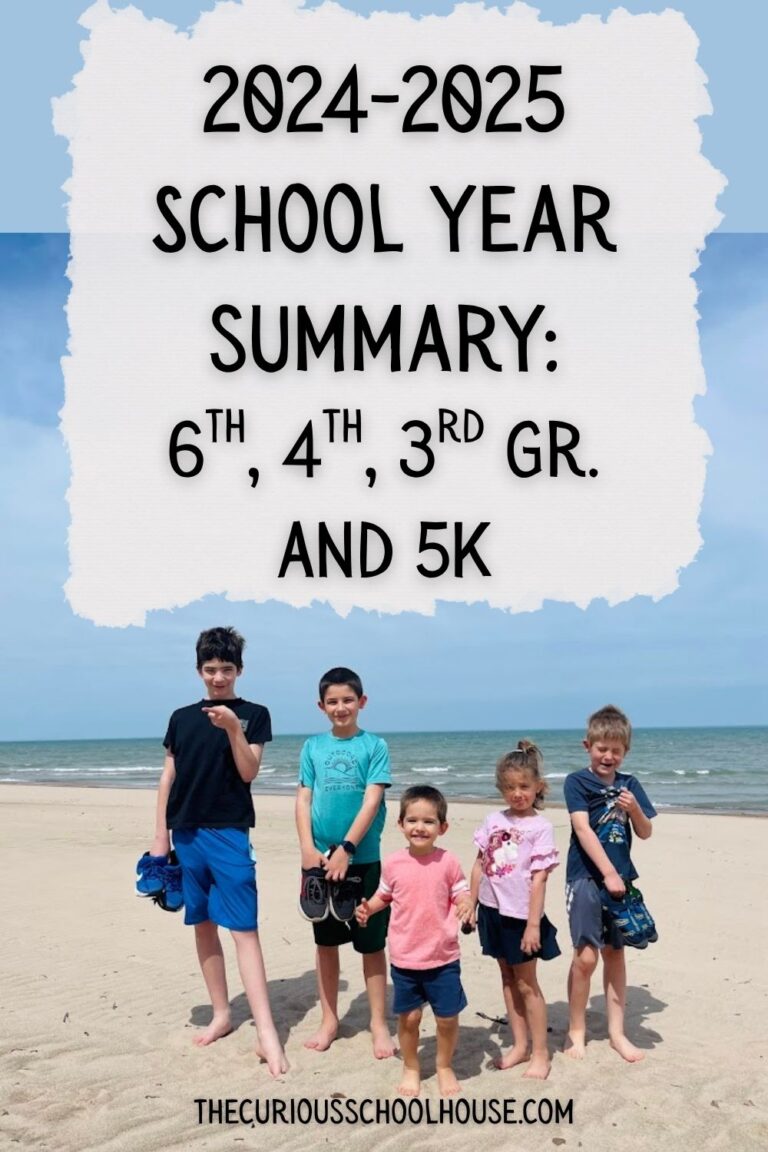
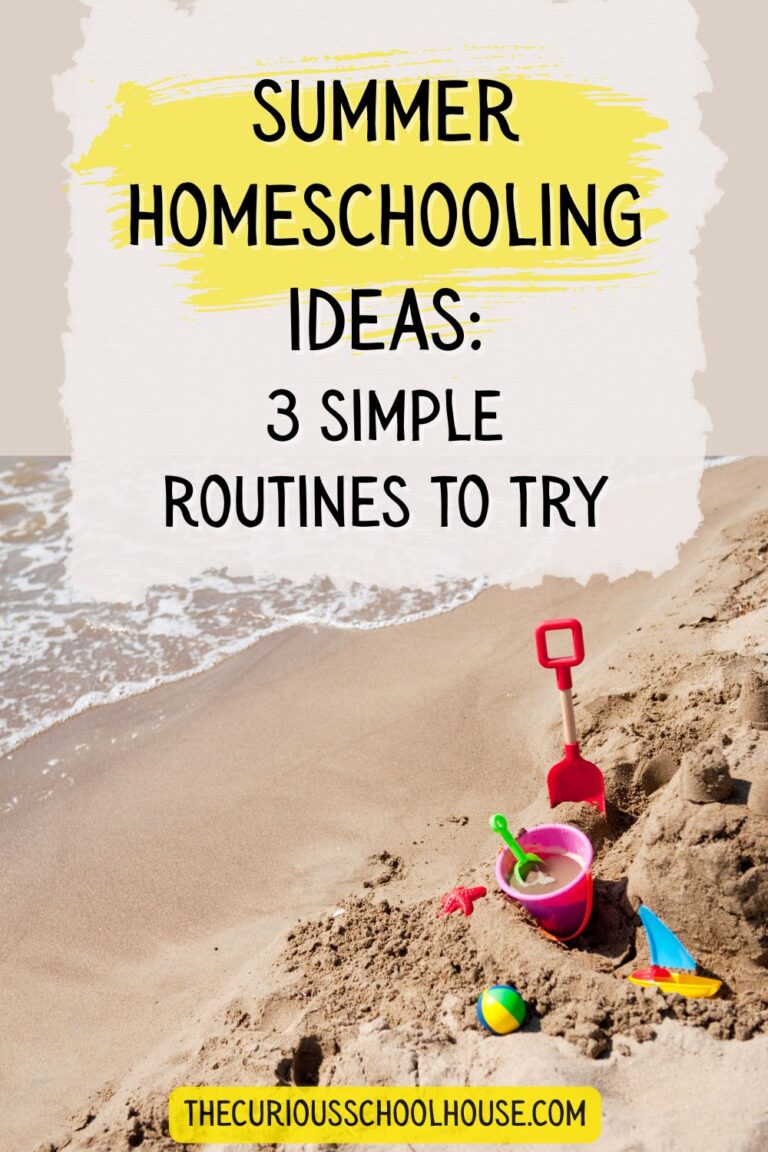

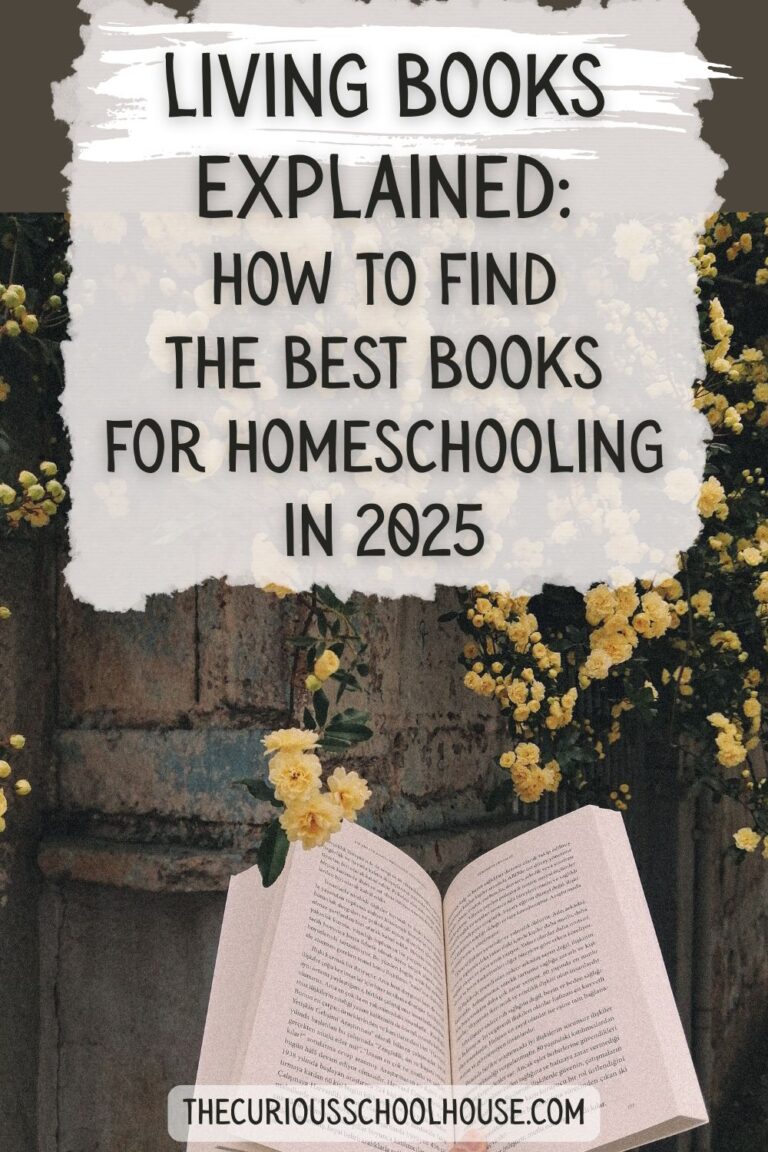
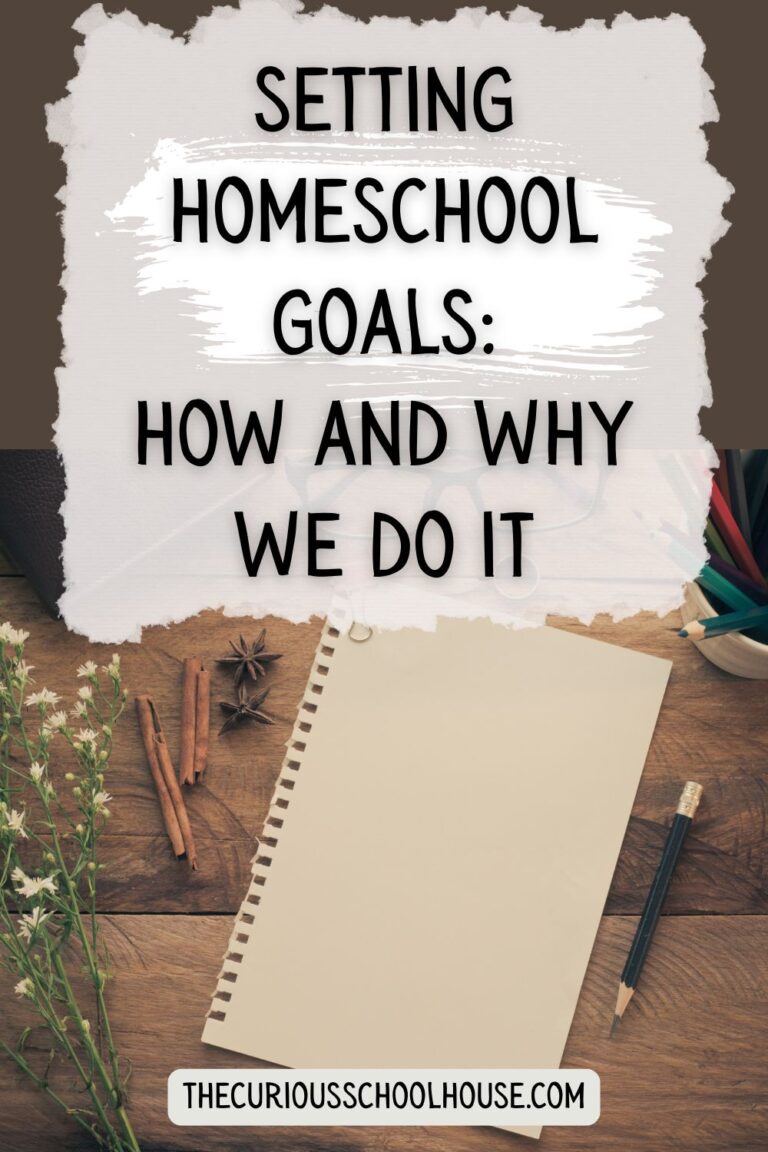
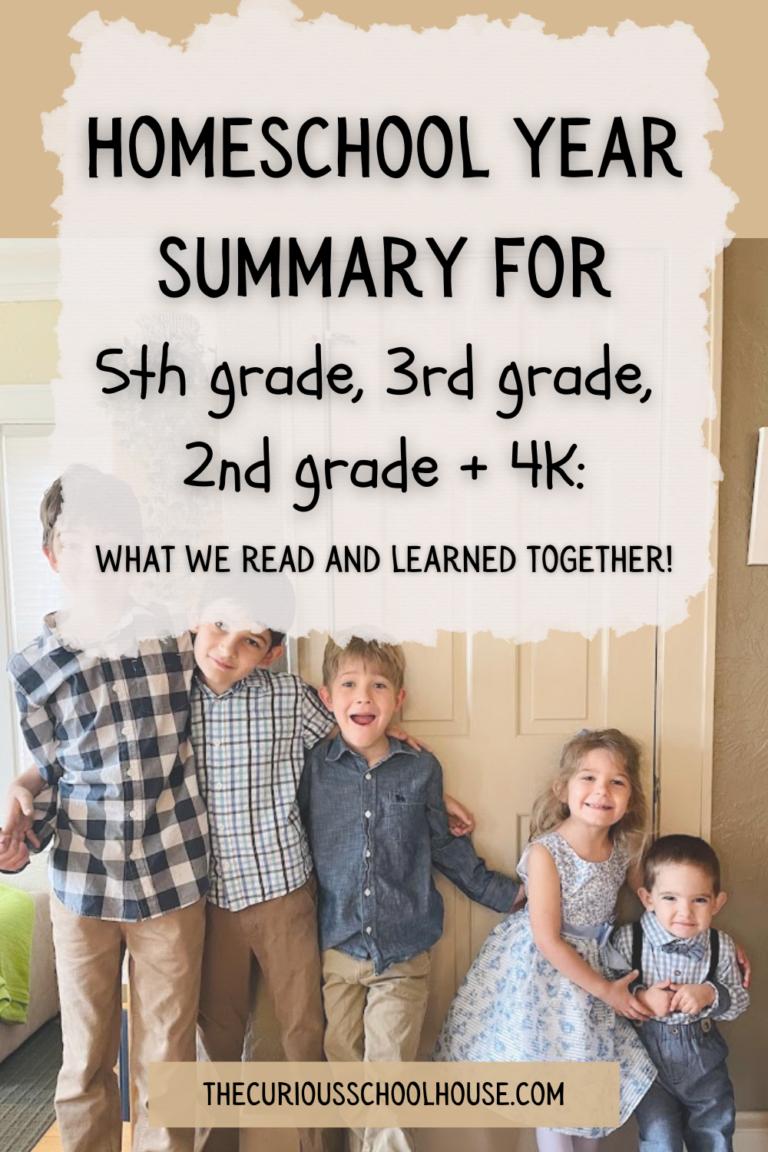
Hi I’d like the free downloads! Thanks!
Hi! If you put your email in the form where it says “grab the CC tutor prep sheets now” you should get them right in your inbox! Let me know if you have any issues after that 🙂
I don’t see a place to put my email.